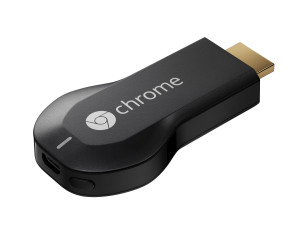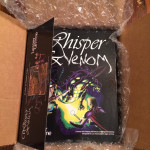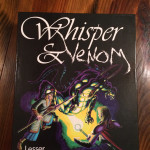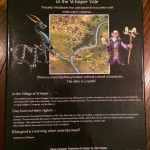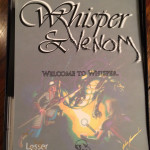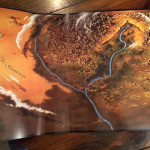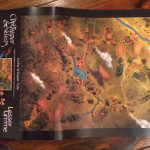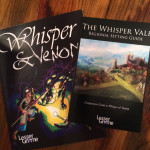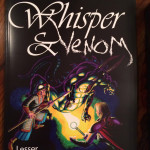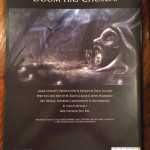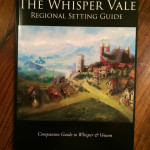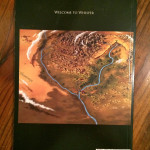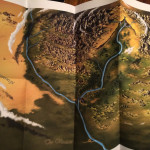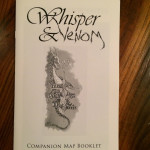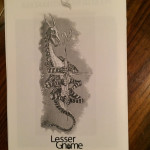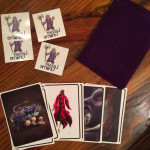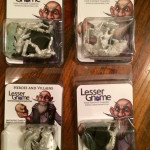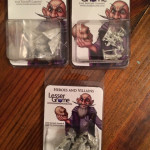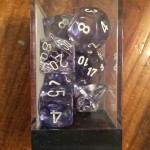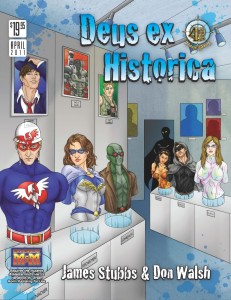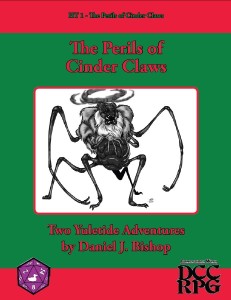 Motivation
Motivation
The PCs in your campaign want to sell a powerful magic item they found in a dungeon. The rulebook says it’s worth 50,000gp. How do you handle that? Do you just say, “OK, you find this guy who buys it off you at full price,” and then send them back to the dungeon for more mayhem?
Doesn’t that leave a bad taste in your mouth? Like you made it too easy?
Shouldn’t selling such a powerful item to an NPC be handled through role-playing? What consequences might arise from an NPC having such an item? And who is this guy anyway?
Well, worry yourself no more!
Applicability
These rules presume a D20 fantasy setting like D&D or Pathfinder.
They are meant to add flavor to the game. In order that they not become tedious, use them only on the 1 or 2 most expensive items the PCs wish to sell. Additional items they want to sell at the same time should just be automatic at the regular price.
If the most expensive item the PCs wish to sell is cheap relative to the party’s level, don’t use these rules at all. Just let them sell their loot at the regular price and move on. Your players aren’t going to be keen on using these rules to sell every rusty dagger and 10 gp gem.
Set-up
First, download the Buyer Encounter deck, print them out (card stock works best), and cut into cards (paper cutter works better than scissors).
Next, divide the cards into two piles, “Good” and “Bad”. The type is shown in the lower-left corner of each card.
Selling a single item
Determine if the town is big enough to have a buyer who can afford the item. The PCs may have to travel to a bigger town or city in order to find buyers. Or they may opt to just keep the item for now if that’s too much trouble. You may want to bend the rules a bit if you feel that traveling to a bigger town or city would derail the campaign.
Example: The PCs are trying to sell a +2 sword in a large town. Its base value is 8000 gp, so the local economy is big enough to have buyers.
1. Determine item legality
Determine if the item is illicit or licit. Illicit items are ill gotten; e.g., contraband, smuggled goods, or items obtained through robbery, burglary, or pick pocketing.
Licit items are those that are obtained legally, such as those purchased on the open market, those found in a typical dungeon, or gifts. Good cards are more likely to be used if the item is licit.
The GM may allow a PC with a high bluff or disguise to make an illicit item appear licit for purposes of these rules. But only one attempt per item should be permitted.
Some cards can cause a licit item to be considered illicit for subsequent buyer event card draws.
Example (cont’d): The PCs found the sword in an abandoned keep, so the GM rules it is licit.
2. Advertising
Some advertising, word-of-mouth and buying drinks must take place in order to find prospective buyers. Assume the party spends 5 gp/week for this.
Example (cont’d): The players buy rounds of drinks at some bars frequented by fighters and warriors. They pay 5 gp for the first week.
3. Potential buyer
One or more potential buyers will show up for a given item.
3a. Time between buyers
Roll 2d6 to determine the number of days before the first prospect shows up and between prospects. On a 2 or a 12, a potential buyer shows up, but no other prospects will show up in that city or town for this item. It this happens, they may try again in 3 months.
Example (cont’d): GM rolls a ‘6’ so the first prospect doesn’t show up for 6 days.
3b. Draw cards
Draw one card from each of the two piles. Do not show them to the players. This does not mean that one Bad buyer and one Good buyer shows up. Just one buyer will show up at a time. Which card to use depends on the roll of a d6 (see next step).
Example: The GM draws the following two cards without showing the players:
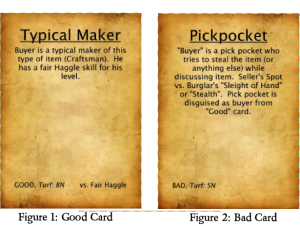
3b. Roll die to determine which card to use
Secretly roll 1d6 and resolve as follows:
a. Licit item: 1-5 use Good card; 6: use Bad card
b. Illicit item: 1-3 use Good card; 4-6: use Bad card
Sometimes a Bad card refers to a Good card; but never the other way around.
Silently read the appropriate card you drew based on the roll. If a Bad card refers to a Good card, read that one too.
You may wonder why I didn’t have you roll the die first and just draw the card you need. If the decks are completely hidden from your players, you can do it that way. Otherwise, the players might notice that you drew only from the Bad deck, which would spoil the fun!
Example (cont’d): The GM rolls a ‘4’. Since the item is licit, use the good card.
3c. NPC quick stats.
If you already have an NPC appropriate to the role, by all means use him. Otherwise, quickly make up only the needed stats for him. Assume that 0-3 (d4-1) of his henchmen/allies are present, who are each 0-3 (d4-1) levels below him. Only select stats for henchmen/allies if it becomes necessary, such as if a chase or battle ensues. The NPC should be someone who can afford the item (see Step 6 here).
Do not take 2 hours fleshing out full stats for NPC buyers while your players die of boredom. If you spend more than 2 minutes for this, you’re taking too long. I hope to write a future article on more techniques for quickly creating an NPC party.
Note these NPCs in your campaign notes, so you can tie them into future adventures. You can add detail to them later if needed.
Example (cont’d): The good card says the prospective buyer is a typical maker of the item. Since he should be able to afford the item, the GM decides he is a master weapon smith (9th level expert). He has two followers: a bodyguard (7th level warrior) and a journeymen weapon smith (6th level expert).
3d. Pick turf
On the lower left of the card, is a note on turf. An “S” indicates seller’s turf (i.e., a place the PC is familiar with and frequents). If “B” is indicated, use the buyer’s turf, such as his home, a shop, or a place he frequents. If “N” is indicated, use a public place that neither is familiar with. If two letters, pick one; e.g., “BN” means you can choose either buyer’s turf or a neutral location. Finally, if “Any” is indicated, pick anywhere.
Preferably, use a location you’ve already made up and have a map for. But if you’re good at making up random locations on the spot, by all means do so. Just be sure to write it down in your campaign notes afterwards, so you can use it again in the future.
If you use a battle map, draw out the scene and pick some figures.
Example (cont’d): The good card indicates “BN” so the GM decides that the PCs are sent word to meet the weapon smith at his shop.
3e. Follow instructions on card and role-play
Silently read the card again and use it to role-play a bit with your players. If a bad card is to be used, in most cases it should not be immediately obvious that it’s bad. In fact, with some bad cards, the NPC is posing as a buyer.
Example (cont’d): The weapon smith asks to see the +2 sword, makes some comments about it being a bit beat up, but that he’s still interested for the right price.
3f. Haggling
Once you’ve role-played a bit, transition to haggling, if applicable. In the future, I plan to write an article with detailed haggling rules. In the mean time, use the following simplified rules:
Determine haggle skill of both buyer and seller. For the seller (a PC), look at the skill with the most ranks. If it is Profession (Merchant), the PC has a high haggle. If it is a trade skill, such as Trade (Blacksmith), Bluff, Appraise, or Diplomacy, the PC has a medium haggle. Otherwise, the PC has a low haggle.
For the prospective buyer (an NPC), look in the lower right corner of the card you’re using (good or bad). This will be high, medium or low.
In these simplified haggling rules, there is only one opposed roll. Both sides roll a d20, modified by the haggle skill of each side. Low: +0, Medium: +4, High: +8. There may be further adjustments to the seller’s roll as indicated on the card.
If the seller’s modified roll equals the buyer’s modified roll, the settled on price is the fair market value listed in the rules. If the seller’s modified roll exceeds that of the buyer, then the settled on price is +5% of the fair market price for each point over the buyer’s modified roll. If the seller’s modified roll is less than that of the buyer, then the settled on price is -5% of the fair market price for each point under the buyer’s modified roll. If the adjusted value is 0% or less, then both sides roll again.
NPC’s will always accept this settled on price. But the PC may reject the offer. If so, no further negotiations are possible. Roll for another prospect.
If the sale is made, proceed to selling the next item, if applicable.
Example (cont’d): The PC seller has a low haggle skill (+0), while the weapon smith has a medium haggle (+4). The PC rolls a ‘6’, the NPC rolls a 9+4 = 13. The difference is -7. So the most the weapon smith will pay is 7×5% below base price, or 65% of 8000 gp = 5200 gp. The seller decides to reject the offer, so he leaves the shop. Go back to step 3a.
Final Notes
If you know before your players arrive that they want to sell some expensive loot, and think you need additional time to prepare, feel free to go through these rules ahead of time. Draw 4 of 5 pairs of buyer cards and take some notes.
About the Author
Ed Larmore is a long-time GM of the Eraven Campaign. He is also the developer of Scabard, an RPG campaign manager.
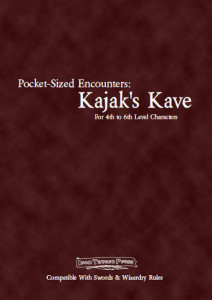 In the week following the debut of Iron Tavern Press and our first product, Kajak’s Kave, I suspect some folks are wondering why I chose Swords & Wizardry for the “default” system. There is a plethora of well-written OSR systems available today and to choose one seems a very difficult task.
In the week following the debut of Iron Tavern Press and our first product, Kajak’s Kave, I suspect some folks are wondering why I chose Swords & Wizardry for the “default” system. There is a plethora of well-written OSR systems available today and to choose one seems a very difficult task.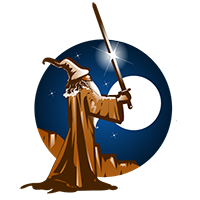 The biggest factor? Swords & Wizardry stat blocks include both ascending and descending AC. To me this is huge. Yes – one can convert even AC on the fly, but to some that seems a mystery or at the very least, not something they feel like doing at the table. Swords & Wizardry includes both a number for ascending and descending AC in the same stat block which removes what I consider one of the larger hurdles for at the table conversion. It also lends itself well to conversion to more complex rule systems such as Pathfinder as well.
The biggest factor? Swords & Wizardry stat blocks include both ascending and descending AC. To me this is huge. Yes – one can convert even AC on the fly, but to some that seems a mystery or at the very least, not something they feel like doing at the table. Swords & Wizardry includes both a number for ascending and descending AC in the same stat block which removes what I consider one of the larger hurdles for at the table conversion. It also lends itself well to conversion to more complex rule systems such as Pathfinder as well.

